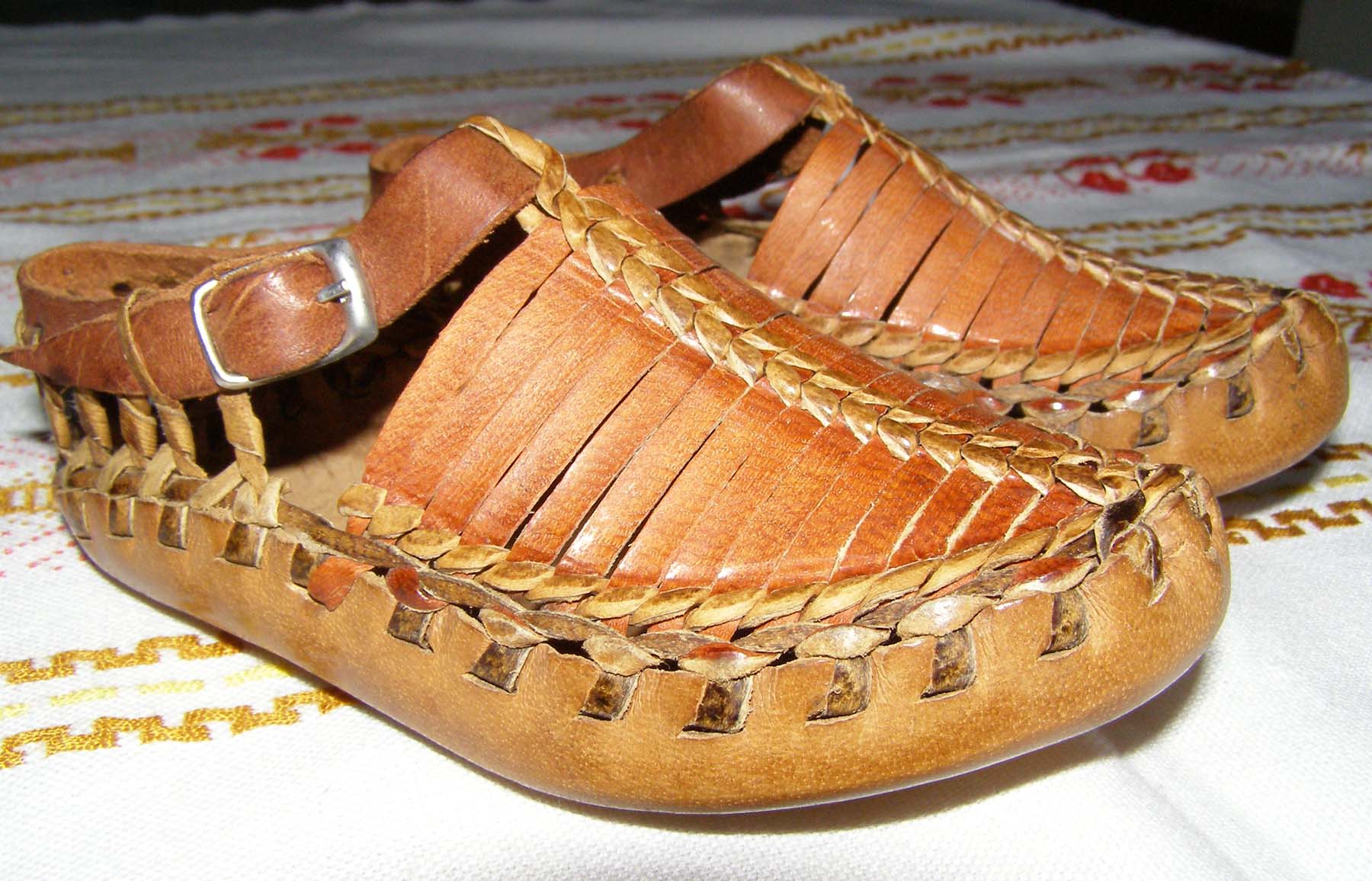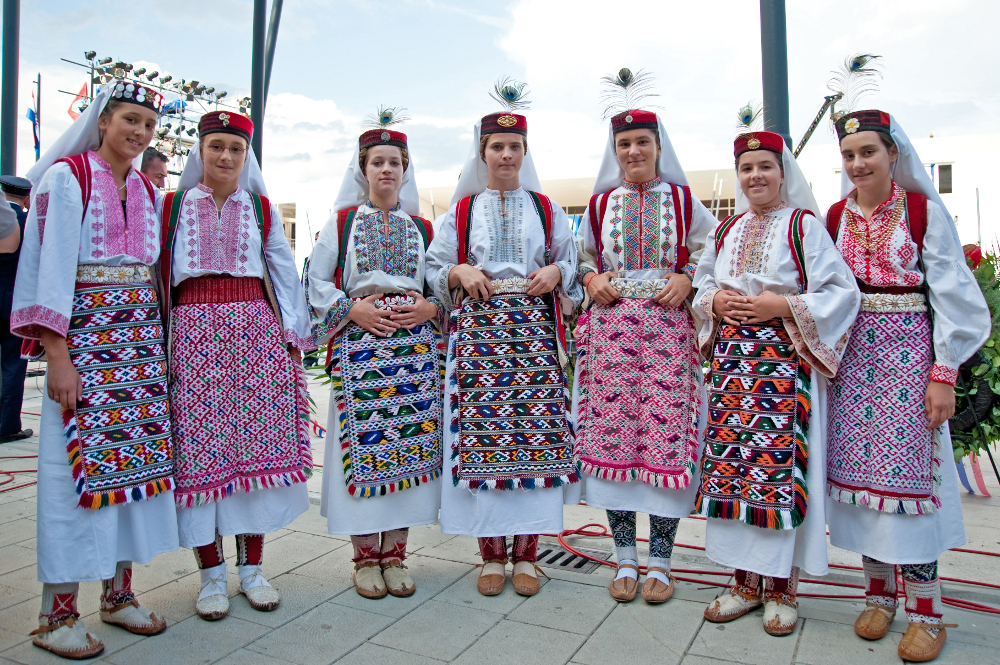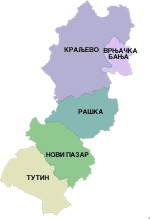|
Opanci
Opanci are traditional peasant shoes worn in Southeastern Europe (specifically Bosnia and Herzegovina, Bulgaria, Croatia, Montenegro, North Macedonia, Serbia, and also Romania and Albania). The attributes of the opanci (name in plural) are a construction of leather, lack of laces, durable, and various endings on toes. In Serbia, the design of the horn-like ending on toes indicates the region of origin, though this specific design is not exclusive to Serbia. The opanci are also considered as the traditional peasant footwear for people in the Balkan region. In Bulgaria they are referred to as "tsarvuli". Etymology Serbo-Croatian òpanak/о̀панак, as well as Bulgarian and Macedonian opinok/опинок, ultimately derive from Proto-Slavic word *opьnъkъ. Proto-Slavic *opьnъkъ is composed from the following parts: * the preposition/prefix *o(b)- "around, on, etc." with final *b assimilated and the resulting geminated consonant cluster *pp simplified to *p * *-pьn-, yieldin ... [...More Info...] [...Related Items...] OR: [Wikipedia] [Google] [Baidu] |
Croatian National Costume
Croatian national costume, also called as Croatian traditional clothing or Croatian dress ( hr, hrvatska narodna nošnja, plural: ''hrvatske narodne nošnje''), refers to the traditional clothing worn by Croats living in Croatia, Bosnia and Herzegovina, Serbia, with smaller communities in Hungary, Austria, Montenegro, and Romania. Since today Croats wear Western-style clothing on a daily basis, the national costumes are most often worn with connection to special events and celebrations, mostly at ethnic festivals, religious holidays, weddings, and by dancing groups who dance the traditional Croatian kolo, or circle dance. Each cultural and geographical region has its own specific variety of costume that vary in style, material, color, shape, and form. Much of these regional costumes were influenced by the Austrian, Hungarian, German, Italian, or Ottoman Empire presence, due to whichever power ruled the region. [...More Info...] [...Related Items...] OR: [Wikipedia] [Google] [Baidu] |
Ablaut
In linguistics, the Indo-European ablaut (, from German ''Ablaut'' ) is a system of apophony (regular vowel variations) in the Proto-Indo-European language (PIE). An example of ablaut in English is the strong verb ''sing, sang, sung'' and its related noun ''song'', a paradigm inherited directly from the Proto-Indo-European stage of the language. Traces of ablaut are found in all modern Indo-European languages, though its prevalence varies greatly. History of the concept The phenomenon of Indo-European ablaut was first recorded by Sanskrit grammarians in the later Vedic period (roughly 8th century BCE), and was codified by Pāṇini in his ''Aṣṭādhyāyī'' (4th century BCE), where the terms ' and '' '' were used to describe the phenomena now known respectively as the ''full grade'' and ''lengthened grade''.Burrow, §2.1. In the context of European languages, the phenomenon was first described in the early 18th century by the Dutch linguist Lambert ten Kate, in his book ... [...More Info...] [...Related Items...] OR: [Wikipedia] [Google] [Baidu] |
Slavonia
Slavonia (; hr, Slavonija) is, with Dalmatia, Croatia proper, and Istria, one of the four historical regions of Croatia. Taking up the east of the country, it roughly corresponds with five Croatian counties: Brod-Posavina, Osijek-Baranja, Požega-Slavonia, Virovitica-Podravina, and Vukovar-Syrmia, although the territory of the counties includes Baranya, and the definition of the western extent of Slavonia as a region varies. The counties cover or 22.2% of Croatia, inhabited by 806,192—18.8% of Croatia's population. The largest city in the region is Osijek, followed by Slavonski Brod and Vinkovci. Slavonia is located in the Pannonian Basin, largely bordered by the Danube, Drava, and Sava rivers. In the west, the region consists of the Sava and Drava valleys and the mountains surrounding the Požega Valley, and plains in the east. Slavonia enjoys a moderate continental climate with relatively low precipitation. After the fall of the Western Roman Empire, which rul ... [...More Info...] [...Related Items...] OR: [Wikipedia] [Google] [Baidu] |
Pannonia
Pannonia (, ) was a province of the Roman Empire bounded on the north and east by the Danube, coterminous westward with Noricum and upper Italy, and southward with Dalmatia and upper Moesia. Pannonia was located in the territory that is now western Hungary, western Slovakia, eastern Austria, northern Croatia, north-western Serbia, northern Slovenia, and northern Bosnia and Herzegovina. Name Julius Pokorny believed the name ''Pannonia'' is derived from Illyrian, from the Proto-Indo-European root ''*pen-'', "swamp, water, wet" (cf. English ''fen'', "marsh"; Hindi ''pani'', "water"). Pliny the Elder, in '' Natural History'', places the eastern regions of the Hercynium jugum, the "Hercynian mountain chain", in Pannonia and Dacia (now Romania). He also gives us some dramaticised description of its composition, in which the proximity of the forest trees causes competitive struggle among them (''inter se rixantes''). He mentions its gigantic oaks. But even he—if the passage in ... [...More Info...] [...Related Items...] OR: [Wikipedia] [Google] [Baidu] |
Vrnjačka Banja
Vrnjačka Banja ( sr-cyr, Врњачка Бања) is a town and municipality located in the Raška District of central Serbia. The population of the town is 10,065 inhabitants, while the population of the municipality is 27,527 inhabitants. Vrnjačka Banja has many hot springs with temperatures measuring exactly that of the human body (37.5 degrees Celsius). Settlements Aside from the town of Vrnjačka Banja, the municipality includes the following settlements: * Vraneši * Vrnjci * Vukušica * Goč * Gračac * Lipova * Novo Selo * Otorci * Podunavci * Rsavci * Ruđinci * Stanišinci * Štulac Demographics According to the last official census done in 2011, the municipality of Vrnjačka Banja has 27,527 inhabitants. Population density on the territory of the municipality is 115.2 inhabitants per square kilometer. Ethnic groups Most of its population are ethnic Serbs (96.2%) and 36.6% of the municipality’s population is urban. The ethnic composition of the munic ... [...More Info...] [...Related Items...] OR: [Wikipedia] [Google] [Baidu] |
Thracians
The Thracians (; grc, Θρᾷκες ''Thrāikes''; la, Thraci) were an Indo-European languages, Indo-European speaking people who inhabited large parts of Eastern Europe, Eastern and Southeast Europe, Southeastern Europe in ancient history.. "The Thracians were an Indo-European people who occupied the area between northern Greece, southern Russia, and north-western Turkey. They shared the same language and culture... There may have been as many as a million Thracians, diveded among up to 40 tribes." Thracians resided mainly in the Balkans (mostly Present (time), modern day Bulgaria, Turkey and Greece) but were also located in Anatolia, Anatolia (Asia Minor) and other locations in Eastern Europe. The exact origin of Thracians is unknown, but it is believed that proto-Thracians descended from a purported mixture of Proto-Indo-Europeans and Early European Farmers, arriving from the rest of Asia and Africa through the Asia Minor (Anatolia). The proto-Thracian culture developed int ... [...More Info...] [...Related Items...] OR: [Wikipedia] [Google] [Baidu] |
Dacians
The Dacians (; la, Daci ; grc-gre, Δάκοι, Δάοι, Δάκαι) were the ancient Indo-European inhabitants of the cultural region of Dacia, located in the area near the Carpathian Mountains and west of the Black Sea. They are often considered a subgroup of the Thracians. This area includes mainly the present-day countries of Romania and Moldova, as well as parts of Ukraine, Moravian Banovina, Eastern Serbia, Northern Bulgaria, Slovakia, Hungary and Southern Poland. The Dacians and the related Getae spoke the Dacian language, which has a debated relationship with the neighbouring Thracian language and may be a subgroup of it. Dacians were somewhat culturally influenced by the neighbouring Scythians and by the Celtic invasion of the Balkans, Celtic invaders of the 4th century BC. Name and etymology Name The Dacians were known as ''Geta'' (plural ''Getae'') in Ancient Greek writings, and as ''Dacus'' (plural ''Daci'') or ''Getae'' in Roman Empire, Roman documents, b ... [...More Info...] [...Related Items...] OR: [Wikipedia] [Google] [Baidu] |
Illyrians
The Illyrians ( grc, Ἰλλυριοί, ''Illyrioi''; la, Illyrii) were a group of Indo-European languages, Indo-European-speaking peoples who inhabited the western Balkan Peninsula in ancient times. They constituted one of the three main Paleo-Balkan languages, Paleo-Balkan populations, along with the Thracians and Ancient Greece, Greeks. The territory the Illyrians inhabited came to be known as Illyria to later Greek and Roman Republic, Roman authors, who identified a territory that corresponds to most of Albania, Montenegro, Kosovo, much of Croatia and Bosnia and Herzegovina, western and central Serbia and some parts of Slovenia between the Adriatic Sea in the west, the Drava river in the north, the Great Morava, Morava river in the east and in the south the Aous (modern Vjosa) river or possibly the Ceraunian Mountains. The first account of Illyrian peoples dates back to the 6th century BC, in the works of the ancient Greek writer Hecataeus of Miletus. The name "Illyrians", ... [...More Info...] [...Related Items...] OR: [Wikipedia] [Google] [Baidu] |
Moccasin
A moccasin is a shoe, made of deerskin or other soft leather, consisting of a sole (made with leather that has not been "worked") and sides made of one piece of leather, stitched together at the top, and sometimes with a vamp (additional panel of leather). The sole is soft and flexible and the upper part often is adorned with embroidery or beading. Though sometimes worn inside, it is chiefly intended for outdoor use. Historically, it is the footwear of many indigenous people of North America; moreover, hunters, traders, and European settlers wore them. Etymologically, the ''moccasin'' derives from the Algonquian language Powhatan word ''makasin'' (cognate to Massachusett ''mohkisson'' / ''mokussin'', Ojibwa ''makizin'', Mi'kmaq ''mksɨn''), and from the Proto-Algonquian word *''maxkeseni'' (shoe). Design File:Hopi Pueblo (Native American). Dancing Shoes, late 19th century.jpg, Hopi Pueblo (Native American). ''Dancing Shoes'', late 19th century. Brooklyn Museum File:Beadedm ... [...More Info...] [...Related Items...] OR: [Wikipedia] [Google] [Baidu] |








._Pair_of_Moccasins%2C_early_20th_century.jpg)